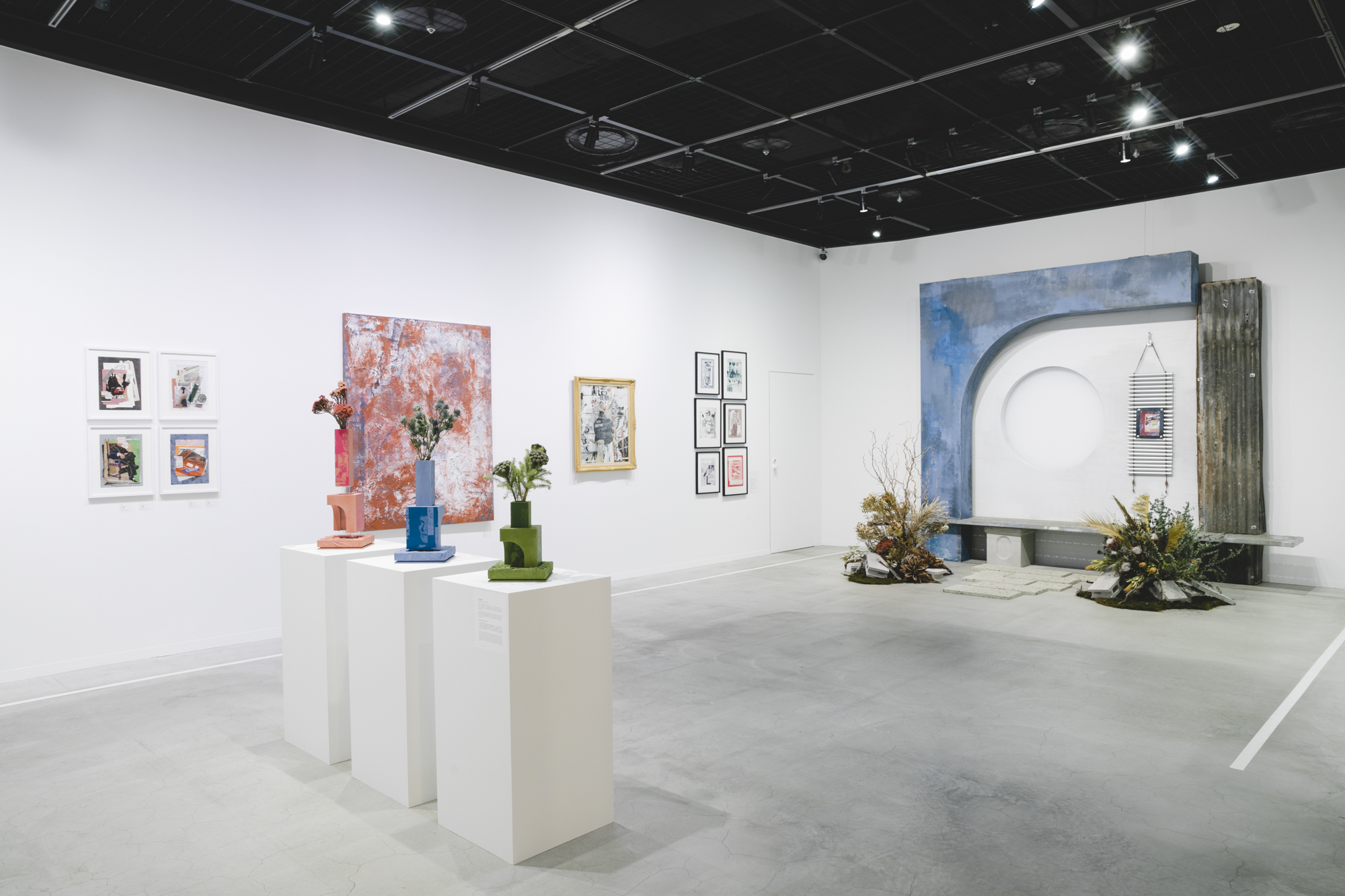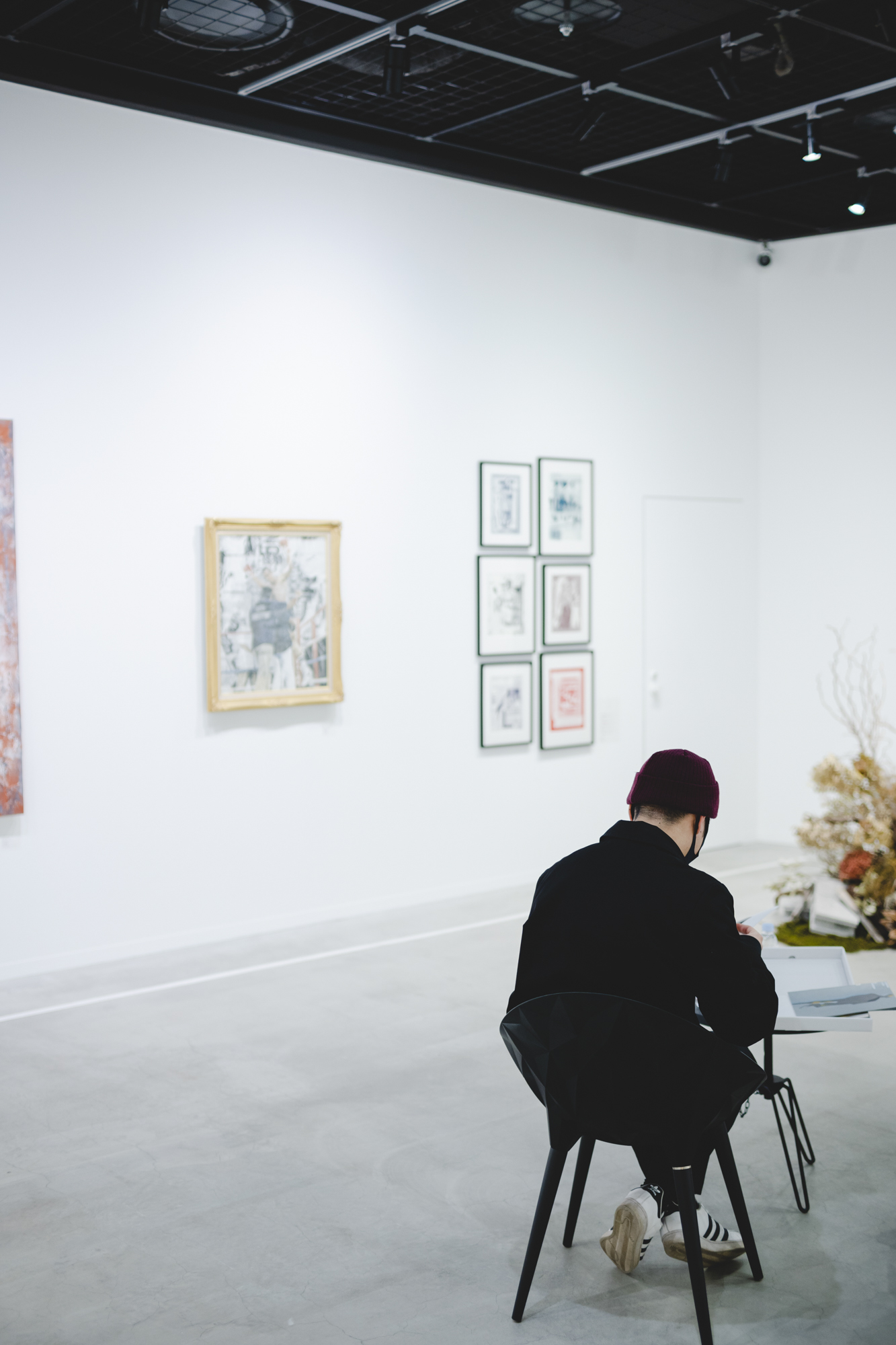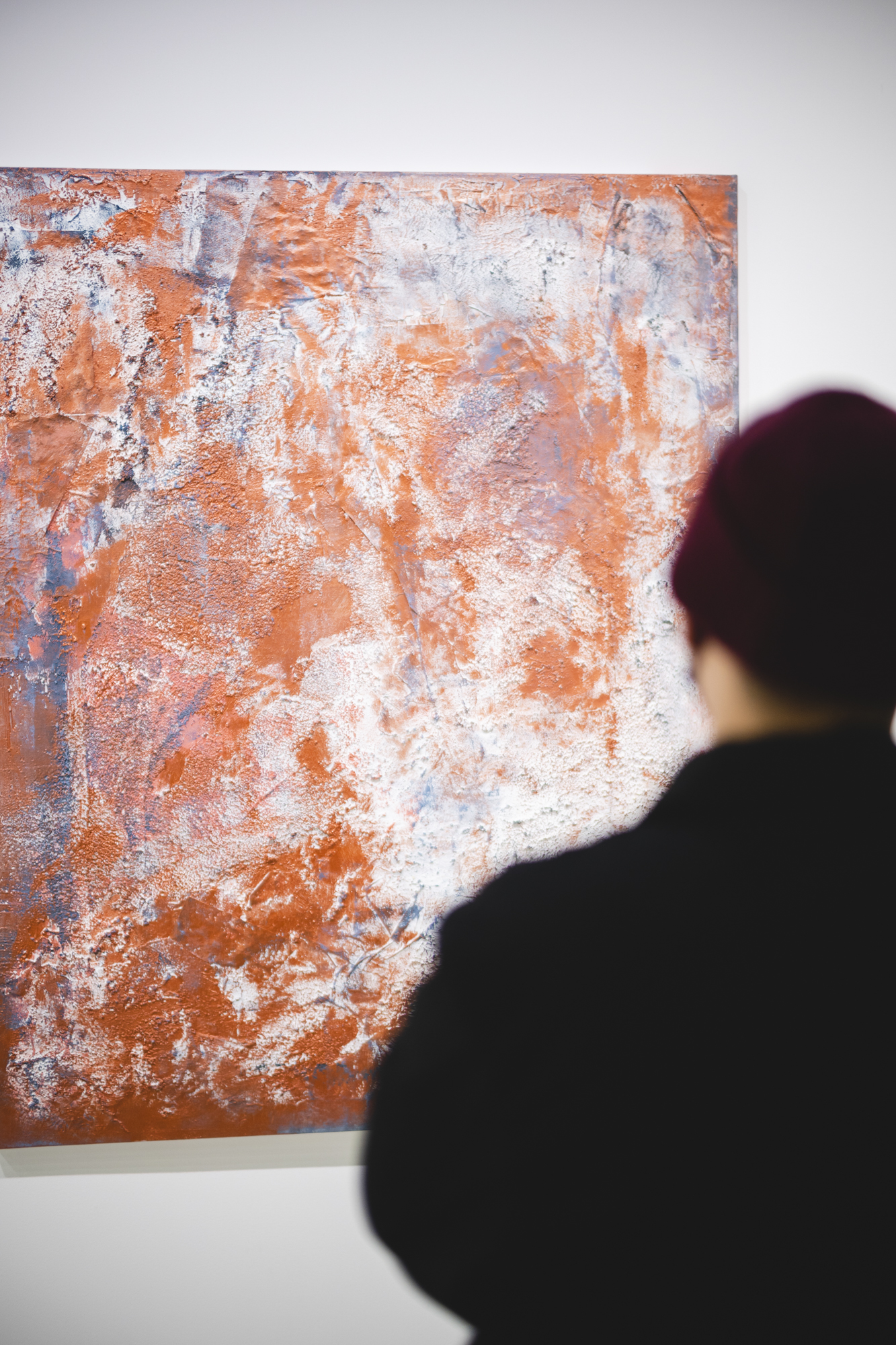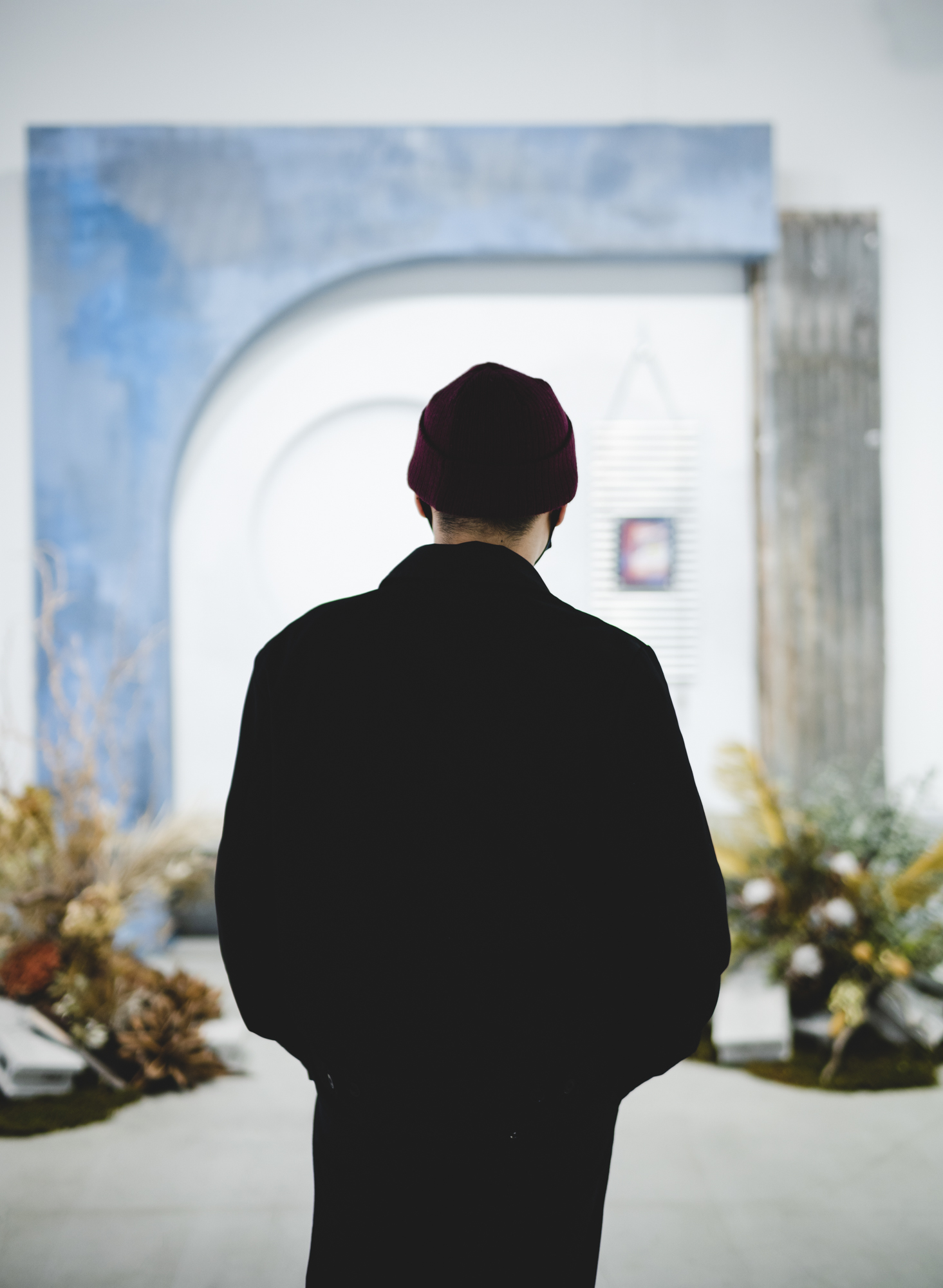Collage artist Yabiku Henrique Yudi’s solo exhibition MOTION is open at DIESEL ART GALLERY in Shibuya Tokyo, until May 13th.
Yabiku was born in 1997 in São Paulo and moved to Japan when he was 11 years old. After he had studied at a fashion school and worked as a salesperson, he began creating collage art in 2017. He garners cut outs of old magazines, his own portrait photos, and even trash he finds in the middle of street or product packaging to create his works; also, he has collaborated with designer brands such as Valentino.
At his largest solo exhibition ever—MOTION—you will see not only his analog collage arts, but an array of his illustrations, and object and installation he had made together with product designer Sakura Totoki. This time, I spoke with Yudi to learn more about his artworks that are tied up with his career and find the reason why he titled the exhibition MOTION—with the hope that his collage arts that confront the rambunctious modern epoch might be projecting something new.
Artworks linking to his career and that are born fortuitously
–I heard that before you got into collage art, you were studying at Bunka Fashion College.
Yabiku Henrique Yudi: I dropped out, but yes, I studied there only for a year. I’m the type who gets bored of things pretty easily and gets into things pretty quickly; and fashion was something that I was passionate about when I was in high school. Studying about clothes seemed like a challenge, but I’m an impulsive person that I just went for it and took the entrance exam.
–There are a lot of people out there who hesitate to take up a challenge, but you’re an active type.
Yabiku: I try to trust my intuition. There’s this mysterious power I feel when an idea comes up to my mind. As I’m this type of person, so far, I’ve been trying out various things. Instead of setting a goal from the beginning, I would rather try different things and find what I truly like to do.
After I quit Bunka Fashion College, I’d started working part-time as a salesclerk at Issey Miyake. In the beginning I was so elated to be working there, but later, I began wanting to do something different. I eventually left the job and soon after I started collage art—This was about three and half years ago.
–You started collaging by cutting out old magazines—why were you collecting those magazines?
Yabiku: After I quit Bunka Fashion College, I had an opportunity to visit a used bookstore in Ikebukuro—which by the way is closed now—with my friend. It’s not like visiting used bookstores was a thing for me, but I was blown away by the old Playboy I found at the store. Back then, I was broke, but these used books were cheap, so I began collecting a lot of them. Right after I quit Issey Miyake, I had plenty of money and time, so I went to a lot of different used bookstores. Essentially, I was merely collecting them for my delectation.
–What would you say are the characteristics of your works?
Yabiku: I heed the negative spaces in my works. Collage art itself is a mixture of various elements that organically gets overloaded with information—so, negative spaces are crucial to balance out the entire picture. I pay attention to the negative spaces for all of my works.
–Can you tell me about the creative process?
Yabiku: To a certain extent, I let the coincidence do its work. If I think too hard, my hands won’t function, and I prefer things to be born out of serendipity. I think my way of working mirrors my career: I’ve always been following my impulsive ideas in my life, and I think that’s carried on to the way I create my works. I can’t even guess what may be produced from the coincidences, but that’s the fun part of it.
–You are from São Paulo in Brazil, and currently reside in Tokyo—How is the respective city reflected in your eyes?
Yabiku: In Brazil, there are a lot of immigrants, and I was surrounded by diverse friends. The city itself was congested and cluttered—like, there would be a museum next to a supermarket. However, even though the city was inundated with information and unorganized, it was still properly functioning as a city.
I think there are similar parts in Tokyo as São Paulo. But Tokyo is advanced in technology compared to Brazil, and extremely strong in fashion and culture. I think it’s a city consisted of a variety of distinctive cultures—and that is the trait of it.
What to discover from the impermanent world—The origin of MOTION
–Why did you decide to title the solo exhibition MOTION?
Yabiku: You see, as there’s a word ‘impermanence’, the world is constantly shifting, and new things are born as well as there are things that decay away. In this circumstance of perpetual ‘motion’, I want to find out ways to discover beauty and see myself in this situation positively—and that’s how I came up with this title.
Also, I like how the word ‘MOTION’ looks. The ‘M’ and ‘N’ on the right look similar to each other, and I think the two ‘O’s look cool. Since the beginning, I wanted the title to be visually appealing, and when I was looking for a word that fits well to myself, the word ‘MOTION’ popped into my head.
–For this solo exhibition, you’re also showcasing artworks other than your analog collages.
Yabiku: I wanted to make artworks with various mediums. This time, other than my analog collages, I’m exhibiting paintings and printed works, as well as three-dimensional artworks like object and installation. Also, by displaying various artworks made with multiple techniques, I thought the entire venue itself would morph into a collage.
–The surface of the abstract painting has a unique texture. You can tell as you take a closer look at it.
Yabiku: I layered the Washi papers for the canvas of that painting. By doing so, I thought that I’d be able to achieve an abnormal texture. Also, I like the subtle discomfort that can only be noticed if you look closely. Initially, I was layering the Washi papers evenly, however in the end, I adhered them randomly wherever it fell on and pealed off the ones that were already glued—so basically the work was created on the canvas of undesigned layers.
–How did you create the 3D artworks?
Yabiku: The flower vase and installation were created together with designer Sakura Totoki, who leads the creative team FELSEM. FELSEM aims to embody minimal and street elements into its works.
We can’t rely too much on coincidences when making 3D artworks, so first, I told the story I wanted to convey to Ms.Totoki, and proceeded as we discussed on how we should put our styles into the works. After we got the entire outline, I painted as I paid attention to the negative spaces and let serendipity take over. I was also thinking carefully on how I could genuinely construe my feelings at that time.
–I see the corrugated galvanized irons used on the installation….
Yabiku: I found those on the internet, and they are from Indonesia. The materials used for the installation are supplied from different places. The work itself has a story: “A young skater taking a break at the porch”—and the porch is made of a scaffold that is actually used at construction sites. The blue part is made of painted woods. And the golden part is a collage of cut-outs of lithography printed on Washi papers. Also, there’s graffiti drawn in serval places of the art. We painted over them to demonstrate the texture of ‘having been erased by an old man with the roller paint brush.
–So, you incorporated the Wa (traditional Japanese) element into the work.
Yabiku: In my maternal country, Brazil, there was no such thing as ‘wabi-sabi’, so when I moved to Japan and read about it in a book, I thought what an amazing way of thinking. I personally feel the Japanese aesthetic in curved lines, so I used distorted circles and motifs in the works.
The most distressful part was to figure out how to interpret Wa with my own style. It didn’t feel right to make it obvious. As I tried out various things, I found out that it’s best for me and the coolest when it’s got the discomfort that is only noticeable when it’s explained. I’ve always wanted to create something big in size, so I was happy to make one. And it motivated me to keep up creating in the future.
Expressing through the artworks
–Regarding the collage artworks, there are multiple elements coexisting in one. What are the things you want to express through your artworks?
Yabiku: There are things you start to see from collaging different things that come from completely different origins, and I think a similar thing could be said in our everyday life: Because of the development of technology, the world has become complex and flooded with information, but we’ve still managed to establish new values. The lifestyles have changed significantly due to Covid, yet we still found new ways to enjoy life. When collaging, I want to coalesce things that would never come across each other, or express new values and beauty forged in the moment of fusing the things that have lost their attractions from aging.
–Earlier, you mentioned that you were happy to have produced the installation—are there things you would like to challenge in the future?
Yabiku: Like the big installation I made for this exhibition, I felt potential in creating a space where you can actually go in. I would like to make something like that again. Also, there’s beauty that can only be conveyed with collage art, and from a different point of view, I think collaging is a great expressive form of art that allows you to use different materials, techniques, and pretty much anything—so I want to explore more new ways of collaging.
Yabiku Henrique Yudi
Born in 1997 in São Paulo, Brazil. He moved to Japan when he was 11 years old. He temporary studied garment creation at Bunka Fashion College. Later, from 2017, he began collaging. In 2019, he opened is first solo exhibition FIRST IMPRESSION at W+K+Gallery. In the same year, his collaboration artwork with Valentino was printed in Them magazine. In 2021, his largest solo exhibition ever, MOTION, is currently held at DIESEL ART GALLERY. Today, as he primarily practices collaging, he makes objects and installations with an aim to expand his range of expression. He is also associated in the creative team FELSEM with product designer Sakura Totoki.
MOTION
Date: February 13th, 2021 – May 13th, 2021
Venue: DIESEL ART GALLERY
Address: cocoti DIESEL SHIBUYA B1 Floor, 1-23-16 Shibuya, Shibuya-ku, Tokyo
Time: 11:30-21:00
Admission: Free

ZINE MOTION
Size: A4
Page: 36pages + the front and back cover
Price: ¥4,950
The zine made in commemoration of the solo exhibition, MOTION, is available on site.
It is a lithography with Yudi’s autograph and comes in an original box and with a post card.
It is exclusively available at DIESEL ART GALLERY and the online store.
https://www.diesel.co.jp/art/yabiku_henrique_yudi
*Lithography is hand signed and numbered by the artist.
*The number cannot be chosen.
*Shipping only to Japan.
Photography Ryu Maeda
Translation Ai Kaneda






